AI and Edge Computing: Transforming Pest Management

Pest management is evolving fast, thanks to AI and edge computing. These technologies are helping farmers respond quicker, reduce pesticide use, and protect crops more efficiently. Here's how:
- AI uses cameras and sensors to detect pests and recommend targeted treatments.
- Edge computing processes data locally, enabling faster decisions without relying on internet connectivity.
- Together, they enable real-time pest monitoring and precise interventions, improving crop health while cutting costs.
Key Benefits:
- Faster Responses: Edge devices process data instantly, reducing delays.
- Cost Savings: Targeted spraying cuts pesticide use by up to 80%.
- Higher Yields: Early detection reduces crop losses by 30%.
- Sustainability: Smarter pest control minimizes waste and resource use.
Farmers are already seeing results: some systems boost yields by over 50% while slashing pesticide costs. With tools like drones, IoT sensors, and AI-powered traps, pest control is becoming smarter and more efficient.
This shift is making farming more productive and accessible, whether you're managing vast fields or a small garden.
AI in agriculture 010: Melon Fruit Fly Pest Detection

Key Technologies Behind AI-Driven Pest Management
Modern pest management is undergoing a transformation, thanks to advanced technologies that allow for faster detection and response to pest threats. These innovations are reshaping how agricultural systems monitor, analyze, and combat pests.
Data Collection with IoT and Drones
IoT sensors play a critical role in pest management by collecting real-time data on factors like temperature, humidity, soil moisture, and pest populations. This constant stream of information helps farmers make precise decisions [4].
The scale of adoption is impressive. According to Berg Insight, by 2025, around 1.7 million in-field monitoring and control devices for pest management will be in use [5]. This is crucial, as pests cause between 20% and 40% of annual crop losses, leading to about $70 billion in damages from invasive insects alone [6].
Drones add another layer of efficiency by capturing high-resolution aerial images and videos of crops. This allows for early detection of pest activity across large areas, which would be nearly impossible to monitor manually [6]. Together, IoT sensors and drones create a robust data ecosystem, enabling farmers to identify patterns in pest behavior and implement prevention strategies more effectively [4]. This data also feeds directly into machine learning systems, making pest detection even more precise.
Machine Learning and Computer Vision
Machine learning, particularly deep learning models like Convolutional Neural Networks (CNNs), has redefined pest identification. These models analyze visual features in images to categorize insects and detect crop damage with exceptional accuracy. Unlike older machine learning methods that required manual feature selection, CNNs automate the process, significantly improving results [10].
Advanced models, such as YOLOv5s and hybrid CNN-transformers, now achieve over 90% accuracy in pest detection and weed classification on large farms [6][10][11]. Hybrid models combine the strengths of CNNs - great for capturing fine details - with transformers, which excel at understanding broader patterns across images. This combination addresses challenges like identifying small, camouflaged pests in complex environments [10][11]. Features like attention mechanisms and multi-scale processing further enhance detection capabilities, making modern systems more effective than ever [11].
These algorithms also power edge computing systems, enabling quick responses by linking data collection with immediate action.
Local Processing with Edge Computing
Edge computing processes data directly at its source, reducing latency to as little as 16 milliseconds. This allows for immediate pest management decisions without relying on constant internet connectivity [3]. For example, one AI-powered IoT system using a lightweight CNN model on an edge device achieved 98.6% accuracy in detecting pests and diseases while operating independently of network connections [3].
Practical applications highlight the benefits of edge computing. Microsoft's FarmBeats platform, for instance, processes sensor data - such as soil moisture and crop health - right at the edge, offering real-time recommendations for tasks like irrigation, fertilization, and pest control [9]. In another example, a cotton pest detection study used a deep-learning model with transformer technology on edge devices, achieving 94% accuracy and processing speeds of 49.7 frames per second [7]. Similarly, a project in mango orchards utilized solar-powered sensor nodes to analyze sticky trap images, successfully classifying seven types of insect pests with an average F1-score of 0.96 [8].
This localized processing ensures uninterrupted monitoring, even during network outages, and can easily scale across large agricultural fields [2].
Benefits of AI and Edge Computing in Pest Management
AI and edge computing are reshaping pest control, offering impressive economic savings and environmental improvements that are changing the way farmers manage pests.
Economic and Environmental Advantages
The financial toll of ineffective pest control is staggering. Traditional methods result in about 40% of crops lost annually due to new pests or species resistant to older treatments [17]. According to the Food and Agriculture Organization, pests are responsible for 20–40% of global yield losses, costing the world economy a massive $290 billion every year [18].
AI-based systems are turning the tide. Take the IOF2020 Project's Within-Field Management Zoning Baltics initiative as an example: by using hyperspectral imaging, IoT devices, and AI analytics, they boosted potato yields by 52.5% to 62.6% and wheat yields by 7.5% to 8.6%. On top of that, they cut fertilizer costs by $250–$353 per hectare ($101–$143 per acre) for potatoes and $175–$245 per hectare ($71–$99 per acre) for wheat [15].
Variable Rate Technologies (VRT) have also shown their worth, slashing pesticide use by up to 80% [15]. Similarly, the SDOP (Smart Detection of Pests) Project reduced pesticide use by 20% through early and precise pest identification [15].
Ajay Sharda, a precision agricultural engineer at Kansas State University, sums it up well:
"There are a lot of benefits from the standpoint of the environment and saving dollars." [19]
These technologies don’t just cut costs - they also conserve resources. Targeted interventions can reduce pesticide use by 20%, water consumption by 30%, and fertilizer usage by 20% [14]. For instance, Sarah Miller’s organic berry farm in Oregon saw a 30% drop in water use and a 25% increase in yield thanks to 5G-enabled soil sensors and edge computing systems [20]. The GaiaInFarm project also reported cutting fertilizer use by 50% to 70%, while solar-powered sensors and AI tools reduced CO₂ emissions by 20% [15].
These advances pave the way for even greater efficiency, especially in early pest detection.
Efficiency and Early Detection
AI isn’t just about saving money - it’s revolutionizing how efficiently pests are managed. Traditional methods often detect problems too late, after crops have already suffered significant damage. In contrast, AI systems can identify over 90% of common crop pests while requiring just 0.2 labor hours per acre, compared to the 1.6–3.2 labor hours per acre needed for traditional scouting [13]. Remote sensing tools can scan up to 100 acres per hour, spotting early infestations before they spread [13]. AI drones have even demonstrated 95% accuracy in diagnosing diseases like apple scab [13].
Early detection is a game changer. Predictive models powered by AI can cut annual crop losses by 30%, while timely disease management increases yields by 20% [14]. For example, Sarah Martinez’s 15-acre farm in Vermont achieved a 30% reduction in water usage and a 25% boost in crop yields using sensor networks and edge computing [20].
Edge computing plays a critical role by processing data locally, reducing latency to as little as 5–10 milliseconds. This ensures pest management decisions are made quickly and effectively [14].
Traditional vs. AI-Driven Systems Comparison
Here’s how AI-driven pest management stacks up against traditional methods:
| Detection Method | Detection Speed (Days) | Accuracy Rate (%) | Labor Hours/Acre | Potential Yield Improvement (%) | Sustainability Rating (1–5) |
|---|---|---|---|---|---|
| Traditional Scouting | 5–14 | 70–75 | 1.6–3.2 | 5–10 | 2 |
| Remote Sensing | 1–2 | 85–90 | 0.4–0.8 | 10–15 | 4 |
| AI Pest Detection | Same Day (0–1) | 92–97 | < 0.2 | 15–25+ | 5 |
Traditional methods rely on manual inspections and broad pesticide application, which are time-consuming, labor-intensive, and prone to errors [3]. They often take 5–14 days to detect pests, with accuracy rates hovering around 70–75% [13]. Plus, they struggle to adapt to changing environmental conditions and diverse pest species [12].
AI-driven systems solve these issues. With 92–97% accuracy, AI pest detection can spot problems on the same day [13]. This allows for immediate action, maximizing effectiveness.
The environmental benefits are equally striking. Traditional methods score just 2 out of 5 for sustainability, while AI pest detection achieves a perfect 5 [13]. Techniques like precision spraying can cut pesticide use by up to 90%, significantly reducing environmental harm without compromising crop protection [13]. And when it comes to yield improvements, AI systems far outperform traditional scouting, delivering 15–25+% gains by addressing issues swiftly and accurately [13].
sbb-itb-4d6a8dd
🚀 Ready to Reinvent Your Garden?
Join thousands of homeowners who have transformed their gardens using our AI design tool. Upload one photo to explore endless possibilities.
Get your AI garden designs →How to Implement AI and Edge Computing for Pest Management
Turning the concept of AI-powered pest management into reality requires thoughtful planning and execution. The process typically unfolds in three key phases, each critical to ensuring the system delivers meaningful results.
Setting Up the Infrastructure
The backbone of an AI pest management system lies in its hardware. You’ll need sensor nodes equipped with cameras, microcontrollers for TinyML, and radio modules. Pair these with cellular gateways like LTE-M and NB-IoT to enable low-power, wide-range connectivity. Depending on your goals, costs can vary significantly - from $30,000 for a basic setup to over $300,000 for advanced systems featuring drones and cloud dashboards [22][23].
Real-world examples from California and Arizona highlight the impact of AI-driven solutions, such as autonomous weeding systems that use computer vision to cut down on labor and chemical use [23].
To start, define clear objectives and set a budget that aligns with your needs. This ensures your investment targets specific challenges rather than adopting technology for its own sake [21]. Cloud-based storage options can help you scale without the hefty price tag of on-premises infrastructure. It’s also crucial to plan how data will flow between your existing IT systems and the new AI setup to ensure compatibility and data integrity [21].
Security should be a priority from day one. Implement strong access controls and encryption to protect your data [21]. Keep in mind that AI systems rely on GPUs for parallel processing, which differs from the CPU-driven architecture of traditional IT setups [21].
Once your infrastructure is in place, the next step is to train and refine your AI models to suit your specific environment.
Training and Maintaining AI Models
The success of your AI system hinges on the quality of its training data. Use local pest images to train your models and keep updating them with fresh, region-specific data. For instance, platforms like Plantix have achieved over 90% accuracy by leveraging extensive localized datasets [24].
Regular updates are non-negotiable. As pest populations and environmental conditions evolve, your AI models must adapt. Continuously collect new data, validate your models with testing datasets, and fine-tune them to avoid overfitting, which can compromise real-world performance [23].
A great example of this in action is Semios, which partnered with Google to enhance almond production. By reducing a moth population by 1.5 billion, their precision farming platform demonstrated how well-maintained AI models, combined with IoT sensors, can lead to significant outcomes [1]. This success underscores the importance of ongoing monitoring and targeted interventions.
Once your AI models are operational, the focus shifts to scaling the system for sustained impact.
Scaling Systems for Long-Term Use
To ensure long-term success, design your system with scalability in mind from the beginning. Modular designs and techniques like model compression (pruning, quantization, distillation) can help reduce computational demands in diverse environments [3][25]. Regular updates, high-quality sensors, and seamless integration with IoT and cloud systems are essential for maintaining performance [25].
A standout example is Blue River Technology’s See & Spray system. Using deep learning and over 30 cameras, it distinguishes crops from weeds with precision. Farmers using this technology have reported up to a 90% reduction in chemical use, improved crop health, and lower costs [23].
The Edge AI market in agriculture is set to grow significantly, potentially reaching billions of dollars by 2030 [25]. To stay competitive, monitor system performance and incorporate user feedback for continuous optimization. As NVIDIA founder Jensen Huang puts it:
"AI is now infrastructure, and this infrastructure, just like the internet, just like electricity, needs factories. These factories are essentially what we build today. They're not data centers of the past … You apply energy to it, and it produces something incredibly valuable …" [21].
Scaling comes with challenges, including high upfront costs, limited connectivity in rural areas, data privacy issues, and workforce skill gaps [25]. Address these by investing in workforce training, securing reliable connectivity, and partnering with technology experts who can support your growth. This approach ensures your system remains effective and adaptable to changing agricultural landscapes.
Future Trends and Applications in Smart Pest Management
Pest management is undergoing a major transformation. With global crop losses from insect pests accounting for an estimated 30 to 40 percent annually, as reported by the FAO [26], the need for smarter, more effective solutions has never been greater. Technologies like AI, edge computing, and new innovations are poised to reshape how pests are detected, predicted, and controlled. Building on earlier advancements, these emerging trends aim to integrate AI even deeper into agricultural practices.
New Solutions in Pest Control
AI-powered drones are taking pest control to new heights, offering precision targeting for infestations. For example, lightweight drones like Tiny-LiteNet achieve an impressive 98.6% accuracy in just 80 milliseconds, all within a compact 1.2 MB framework. This makes advanced pest detection accessible even to smallholder farms [3].
Predictive analytics is another game-changer, shifting pest management from reactive to proactive. By analyzing weather data, soil conditions, and historical trends, these systems can forecast pest outbreaks before they happen. This allows farmers to take preventive steps, minimizing both crop losses and the need for chemical interventions.
Real-time monitoring tools are also making waves. Farmsense’s FlightSensor uses optical technology to identify insects instantly as they pass through traps, eliminating delays caused by cloud processing [23]. Similarly, the EFOS Ltd. Trapview System employs IoT-enabled traps equipped with cameras and sensors to track pest populations in orchards and vineyards. AI algorithms then process this data, enabling timely and precise action [3][26].
The Role of Platforms Like AIGardenPlanner
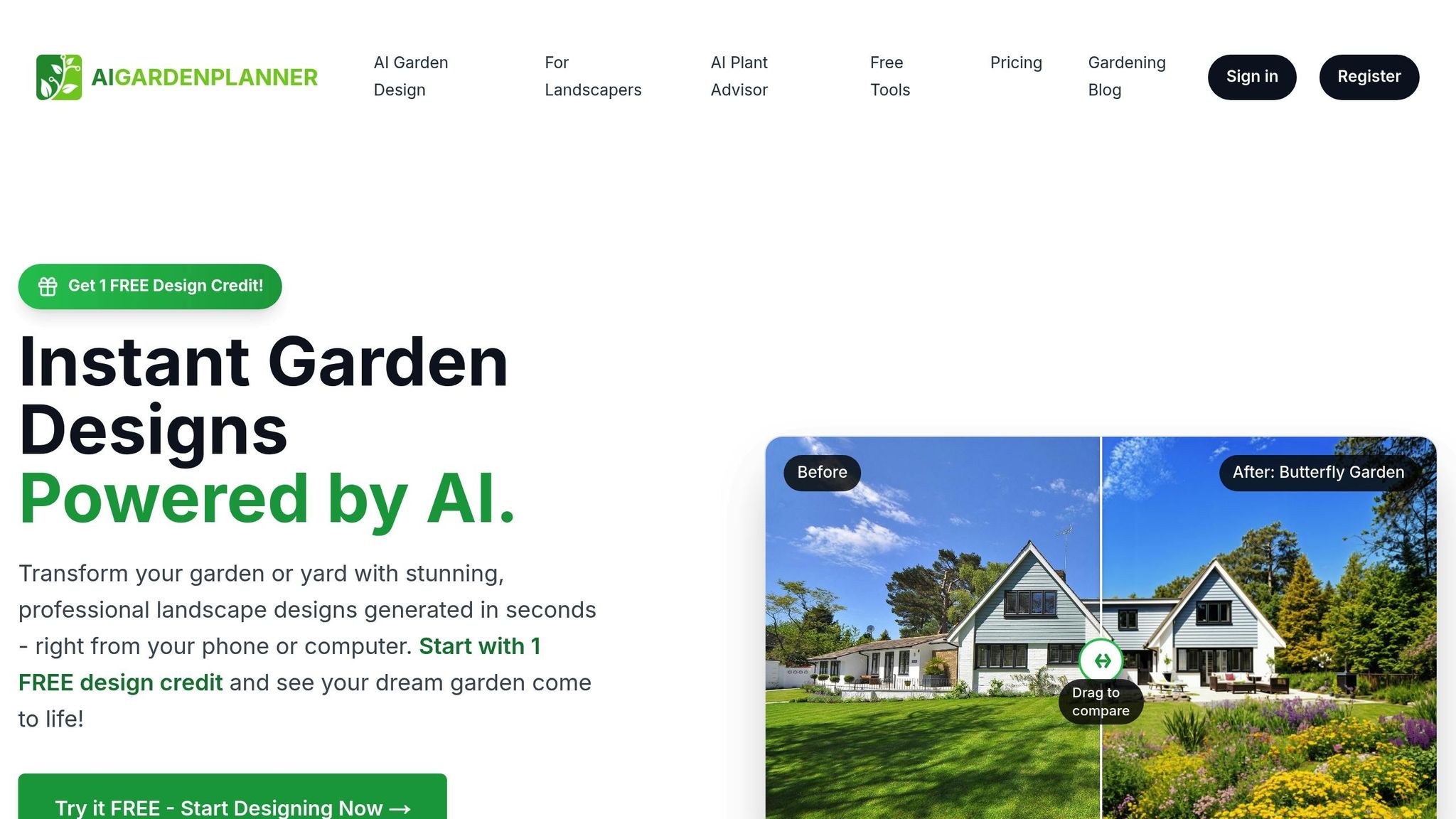
Platforms like AIGardenPlanner are adding practical value to these technological advances by combining garden design with pest management insights. While its primary focus is on AI-driven garden planning and plant recommendations tailored to specific climates and locations, the platform’s foundation in plant intelligence naturally aligns with pest management strategies.
AIGardenPlanner analyzes over 50 garden styles and provides detailed growing guides, making it an excellent tool for integrated pest management. By understanding which plants thrive in certain climates, users can make informed decisions that naturally reduce pest issues through companion planting and increased biodiversity.
Its recommendations could easily integrate with predictive pest management systems. For example, when the platform suggests plants suited to a specific region, it could also highlight common pests and diseases linked to those plants, offering gardeners and farmers actionable insights from the very start.
Additionally, the platform’s professional-grade tools for landscapers provide opportunities to weave pest management best practices into garden design. This creates spaces that are not only visually appealing but also more resilient to pests.
Looking Ahead: The Future of AI in Pest Management
The integration of AI and edge computing is set to redefine pest management over the next decade. Detection systems are expected to become nearly flawless as algorithms improve and datasets expand [13]. Low-cost sensors and better connectivity will make precision farming tools accessible to operations of all scales.
Edge computing will likely become standard, with small-satellite constellations enabling real-time decision-making, even in remote areas [13]. This could allow farmers to scan up to 100 acres per hour for early signs of pest infestations, drastically improving response times [13].
Current AI systems already demonstrate the potential to boost yields by 15–25% while cutting pesticide usage by as much as 90% through targeted spot spraying [13]. As these technologies advance, these benefits are expected to grow further.
Automation will play a key role, reducing labor needs while increasing crop productivity. The fusion of AI, IoT, and drones will push precision agriculture to new levels. Climate change, which is altering pest behaviors and distributions, will also drive the evolution of AI systems to address emerging threats in agriculture.
"Agricultural science is largely a race between the emergence of new pests and the emergence of new techniques for their control." – Aldo Leopold [27]
The future lies in interconnected systems that seamlessly combine multiple technologies. As AI expert Inupa Bandara aptly puts it:
"Data is the backbone of AI" [27]
This highlights the importance of continuous, high-quality data collection for these systems to remain effective. The convergence of AI, edge computing, and other emerging technologies promises a future where pest management is not only smarter but also more efficient and sustainable.
Conclusion
AI and edge computing are reshaping pest management, delivering real-world benefits across the globe. Take India, for instance: AI-powered pest prediction models have helped cotton farmers cut pesticide use by 30%, resulting in healthier crops and better yields [28]. Over in Kenya, similar AI systems track fall armyworm activity in maize fields, offering early warnings that have reduced crop losses by 40% [28]. These examples highlight the economic and practical potential of this technology.
From a cost perspective, these advancements are game-changers, slashing expenses by 30% and increasing productivity by 20% [28]. On the environmental front, the impact is equally striking - targeted interventions have cut pesticide use by up to 20%, reduced water consumption by around 30%, and lowered fertilizer use by 20% [14].
The speed of edge computing is another critical factor. With latency as low as 5–10 milliseconds, it enables immediate responses to time-sensitive farming tasks, eliminating delays caused by manual inspections [14]. This kind of real-time processing is nothing short of revolutionary for modern agriculture.
For small-scale growers, platforms like AIGardenPlanner are making these technologies more accessible. By using AI to recommend plant pairings and designs tailored to specific climates and locations, the platform naturally integrates pest management into garden planning. This creates gardens that are more resilient to pests while simplifying the process for users.
Looking ahead, the potential is even greater. As one expert from Frontiers explains:
"AI algorithms can be useful in detecting insects of various sizes and feeding habits and promptly notify farmers about the invasion of insect pests in their fields through smartphones, enabling them to take timely actions to prevent crop losses." – Frontiers [16]
Early disease detection systems are already proving this point, with the ability to reduce crop losses by up to 30% annually [14]. These technologies are tackling some of agriculture's biggest challenges while promoting more efficient and sustainable practices.
This shift is making farming both more sustainable and more profitable. As these systems advance, they promise to bring precision agriculture within reach for everyone - from backyard gardeners to large-scale commercial farms. The future of farming is here, and it's powered by innovation.
FAQs
How do AI and edge computing enhance pest management in agriculture?
AI and edge computing are transforming pest management by enabling instant monitoring and focused actions. With edge computing, data is processed directly on devices like drones, sensors, and cameras, cutting out delays caused by cloud dependency. Meanwhile, AI steps in to analyze this data, identifying pests, forecasting infestations, and suggesting precise countermeasures.
This method minimizes the need for chemical pesticides, enhances crop health, and helps farmers save both time and resources. By blending advanced data analysis with on-site processing, AI and edge computing deliver a smarter and more efficient way to manage pests and safeguard agricultural productivity.
What are the economic and environmental advantages of using AI-powered pest management systems over traditional methods?
AI-powered pest management systems offer cost-saving advantages by cutting down expenses tied to overusing pesticides and preventing crop damage. With early pest detection and targeted pesticide application, farmers can boost productivity while reducing unnecessary waste, translating into considerable financial savings.
From an ecological standpoint, these systems encourage more sustainable farming by lowering reliance on chemicals, protecting biodiversity, and reducing the environmental footprint of pest control. They help maintain healthier ecosystems while ensuring pests are managed effectively, making them a practical solution for balancing economic efficiency with environmental care.
What challenges do farmers face when using AI and edge computing for pest management, and how can they address them?
Farmers often face hurdles like outdated hardware, unreliable data accuracy, steep initial costs, and limited technical expertise when trying to adopt AI and edge computing for pest management.
To overcome these challenges, they can turn to AI platforms designed for ease of use, making operations simpler and more accessible. Using edge devices to process data locally can also minimize dependence on internet connectivity, which is especially helpful in rural areas. Opting for scalable solutions that fit within their budget is another practical step. Furthermore, enhancing data collection methods and seeking out training or support for these technologies can make the adoption process much smoother and more effective.
🎨 Visualize Your Dream Garden Today!
Transform any outdoor space into a professional landscape design in minutes. Just upload a photo, choose your style, and let our AI do the rest.
Start your garden transformation now →Related posts
Related Articles

Are European Garden Spiders Poisonous? A Comprehensive Guide
Learn about the appearance, behavior, and venom of European garden spiders. Find out if they are poisonous to humans and what to do if bitten. Discover how to prevent garden spider bites and why they are beneficial to have around.
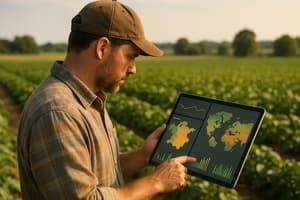
Big Data for Climate-Specific Pest Control
Explore how big data analytics revolutionizes pest control by enabling real-time, climate-specific strategies for farmers and gardeners.
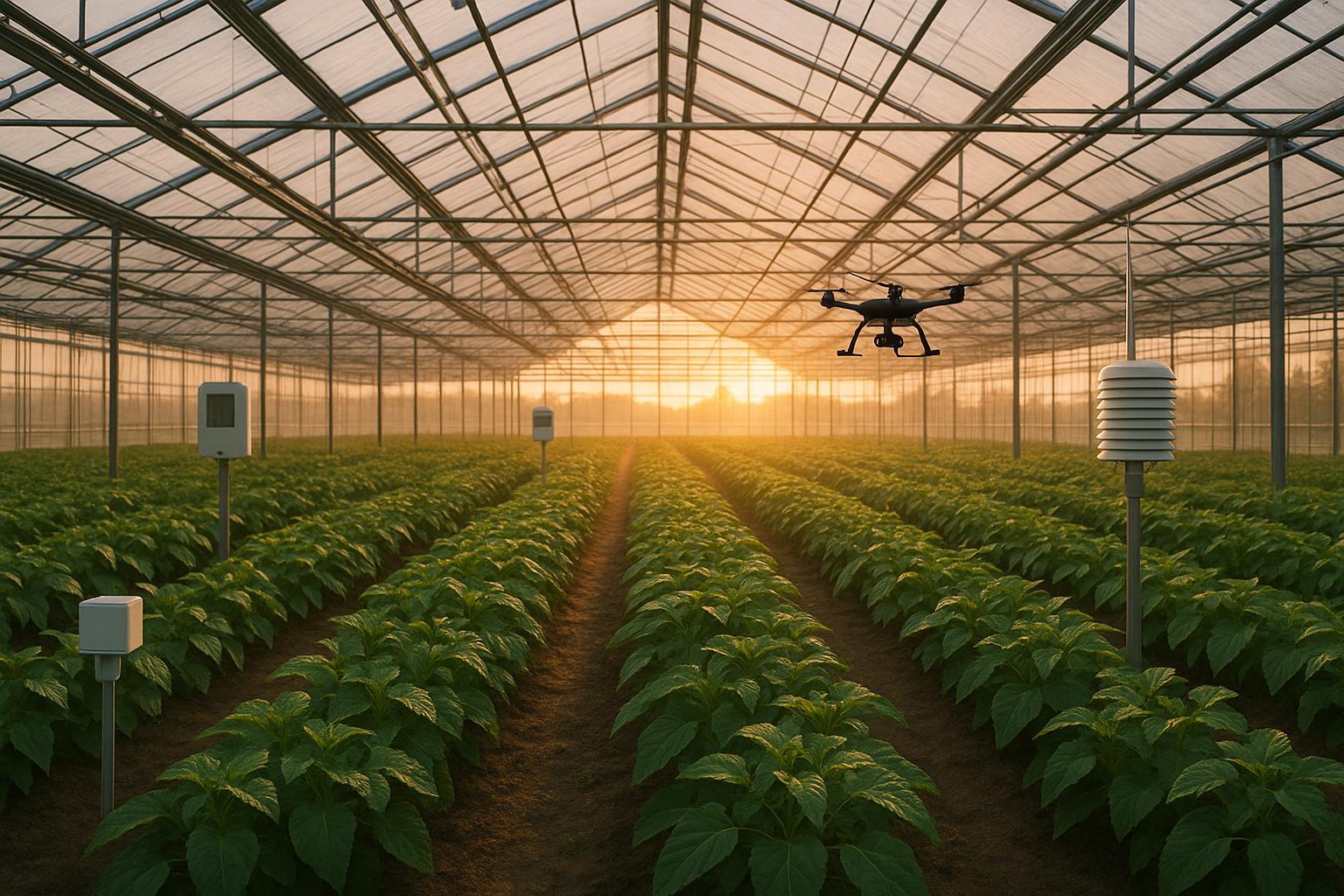
IoT in Biocontrol: Case Studies
Explore how IoT technology is revolutionizing pest management through precision, efficiency, and sustainable practices in agriculture and gardening.
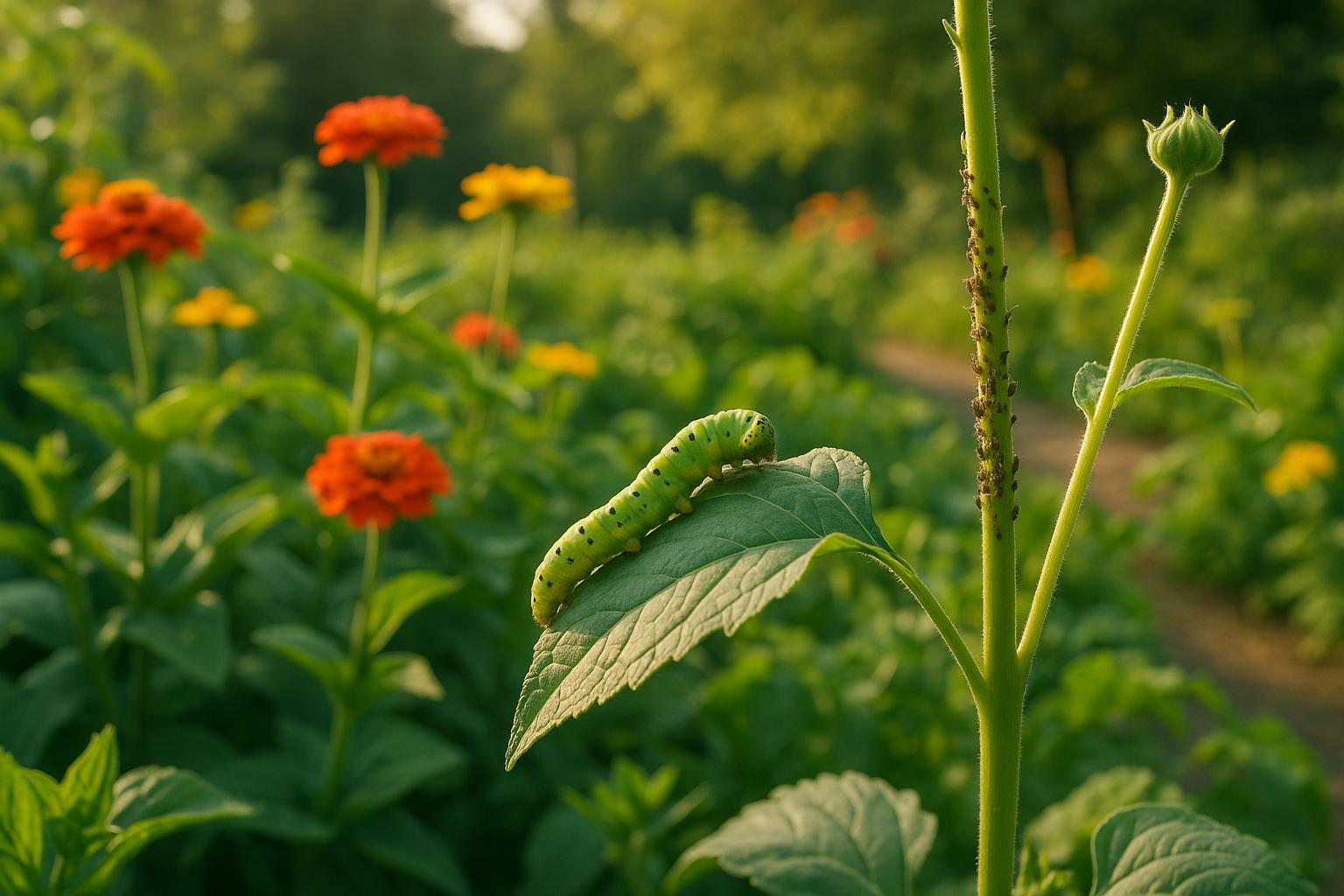
How Climate Affects Pest Risks in Gardens
Climate change is altering pest behaviors, leading to increased risks in gardens. Learn how to adapt and manage these challenges effectively.

Mastering Garden Planning: A Comprehensive Guide for Every Gardener
Discover essential garden planning techniques, from selecting the perfect location to choosing the right plants and maintaining your garden. Ideal for both beginners and experienced gardeners!
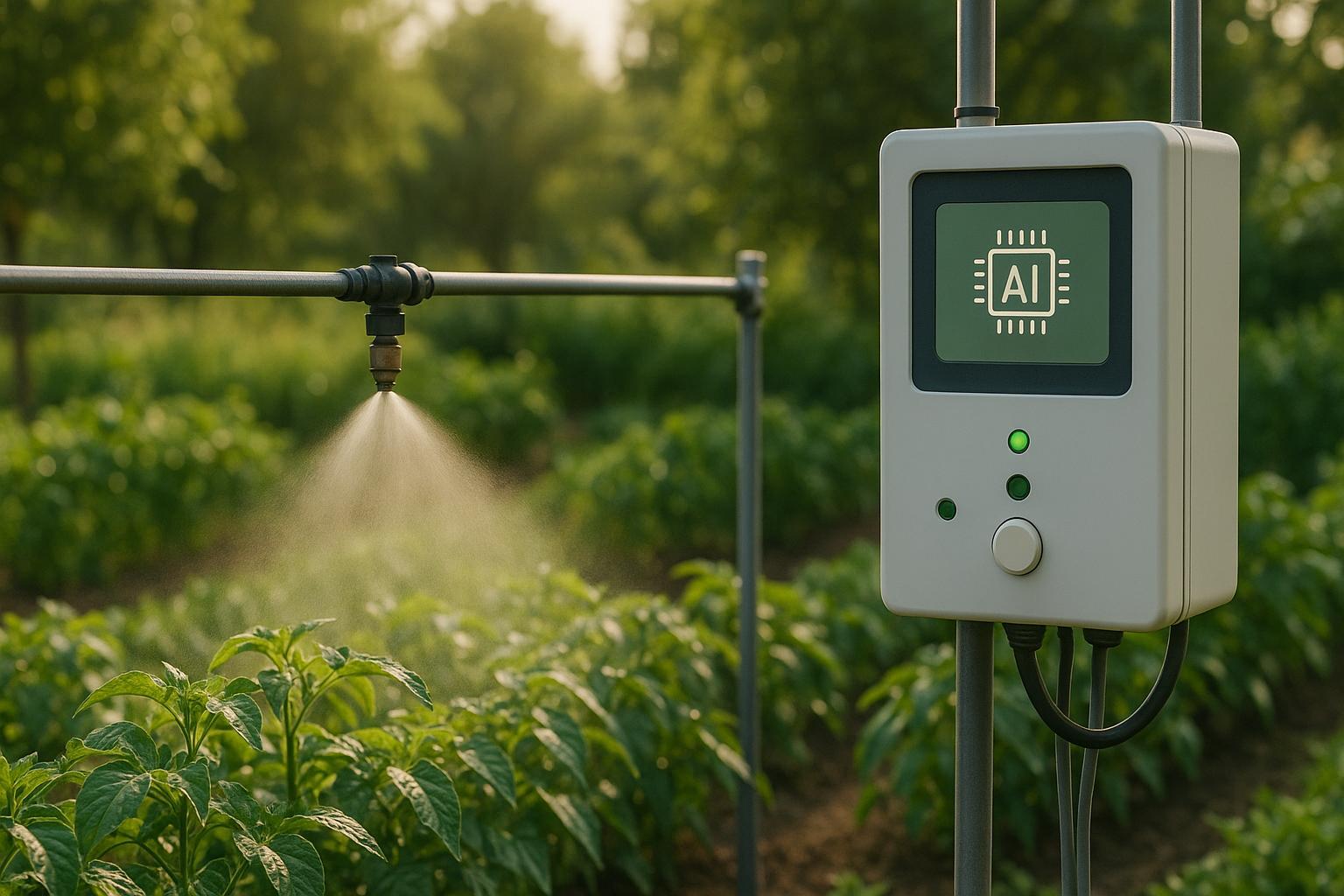
Checklist for Setting Up AI Spray Systems
Learn how to effectively set up and maintain AI spray systems for precise pest control in your garden, optimizing health and minimizing chemical use.